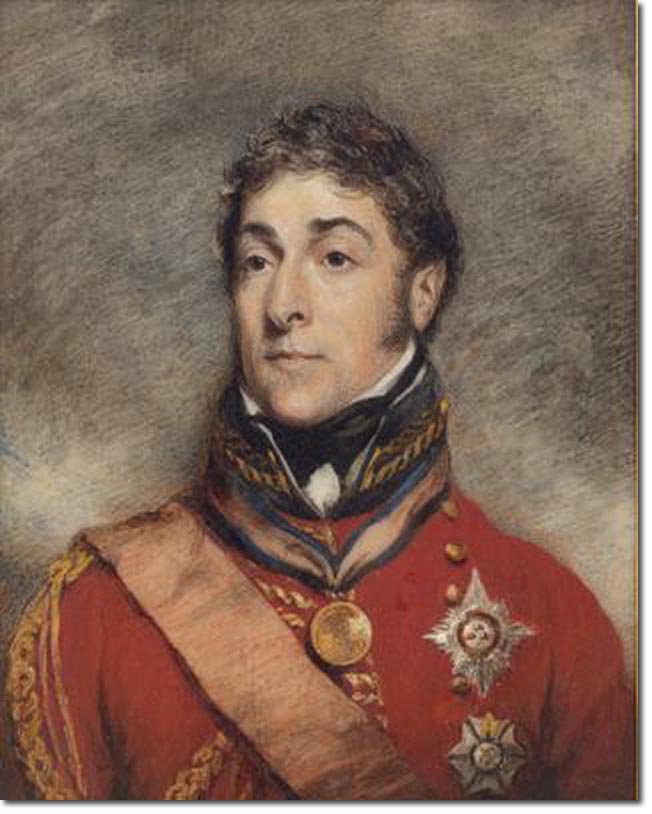|
|

|
|
Stapleton Cotton was born on 14 Nov 1773 at Lleweni Hall, Denbighshire. He was the second surviving son of Sir Robert Salusbury Cotton, 5th Bt and Frances Stapleton of Combermere Abbey. He was educated at Westminster School. In 1790 he gained a commission in the 23rd Welsh Fusiliers and was a captain in the 6th DG in 1793. He was present at the Siege of Dunkirk in1793 and at Beaumont in 1794. He was a lieutenant-colonel in command of the 25th Light Dragoons on 27 Sep 1794 and took the regiment to India, being present at the siege of Seringapatam in 1799 where he met Arthur Wellesley. he was promoted to Colonel in Jan 1800 and given command of the 16th Light Dragoons. They were posted to Ireland and helped suppress Robert Emmet's rebellion in 1803. He was promoted to major-general in 1805 and put in command of a cavalry brigade.
In the Peninsula War he made a name for himself as a courageous cavalry leader and a finely dressed dandy. He was at the battles of Porto and Talavera, and in 1809 he inherited the baronet title. He returned home briefly and came back to the war in May 1810. He was now in overall command of the cavalry and as such was at Bussaco, and covered the withdrawal to the lines of Torres Vedras. After the battles of Sabugal and Fuentes de Onoro in 1811 he was promoted to lieutenant-general. At Salamanca in July 1812 he was second in command of the army and led a very successful cavalry charge which caused Wellington to remark, "By God, Cotton, I never saw anything so beautiful in all my life; the day is yours!" Unfortunately he was accidentally shot and wounded by a sentry after the battle. But he was able to attend the battles of the Pyrenees in July 1813, Orthes in Feb 1814 and Toulouse in April 1814. For his services in the war he was awarded Knight Grand Cross of the Order of the Bath and elevated to the peerage as Baron Combermere of Chester on 3 May 1814. There is an equestrian statue of him outside Chester Castle. At the Battle of Waterloo, command of the cavalry was given to Lord Uxbridge at the request of the Prince Regent but Combermere took over command after Uxbridge was badly wounded. In March 1817 he became Governor of Barbados and commander of the West Indian forces. He was also the last Governor of Sheerness in Jan 1821, and Commander-in-Chief in Ireland in 1822. He was promoted to General in May 1825 and made Commander-in-Chief, India. He laid siege to Bharatpur and restored the rightful Raja to his throne. For this he was elevated once more to Viscount Combermere (8 Feb 1827). He retired from active service in 1830 and was promoted to Field Marshal on 2 Oct 1855. He was Colonel of the 20th Light Dragoons from 27 Jan 1813 until its disbandment in Dec 1818, and Colonel of the 3rd Light Dragoons from 2 Jan 1821 until 15 Sep 1829. He was appointed Colonel and Gold Stick of the 1st Life Guards on 16 Sep 1829, and remained in that post for 36 years until replaced by Lord Lucan on 22 Feb 1865. He was married three times, and died on 21 Feb 1865 at Colchester House in Clifton. He is buried in St Margaret's Church, Wrenbury. |
Armed Forces | Art and Culture | Articles | Biographies | Colonies | Discussion | Glossary | Home | Library | Links | Map Room | Sources and Media | Science and Technology | Search | Student Zone | Timelines | TV & Film | Wargames